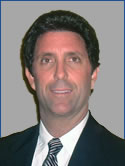Creating safe schools is the responsibility of the entire community where a school or school system resides. Yet, the day-today operation is primarily the responsibility of the teachers, administrators and security or law enforcement officers at the school. But, before the first student walks the halls, an architect creates the design of the school and what will be the subsequent relationships between people and their buildings. The success or failure of that school is predisposed to the quality of design and the limitations of budget.
The basic crime prevention through environmental design (CPTED) premise is that through the effective use and design and management of the built environment, there can be a reduction in the opportunity and fear of crime, and result in the improvement in the quality of life. If we can build effective spaces using CPTED in the next generation of schools, we will substantially reduce the opportunity and fear of crime in them.
There is a connection between the design and management of schools and the relationship to crime.
Schools must address the conflicting goals of being an accessible facility to its students and faculty, yet be secured and controlled environments. The design of elementary schools through college campuses needs to address the functional integration of CPTED and security features to control access onto the site and in the buildings, reduce vandalism, document activity on the property, control movement in areas of the building that are restricted and provide communication between faculty and administration and emergency assistance.
Safe and Secure School Design Principles
Beyond specific designs that may vary from school to school, there are some general principles for success in security. They are defined here as Safe and Secure School Design Principles, which are:
- Effectiveness of security design modifications and security programs;
- Affordability of security programs and features;
- Acceptability of security technology and practices;
- Definition of assets that are worthy of being protected;
- Definition of threats of what is vulnerable to attack and loss; and
- Characterization of the environment and balancing the needs to the threats.
Safe and Secure School Principles involve five key areas, and each area should include security layering planning practices:
- Site Design includes features of: landscaping, exterior pedestrian routes, vehicular routes and parking, and recreational areas.
- Building design features: building organization, exterior covered corridors, points of entry, enclosed exterior spaces, ancillary buildings, walls, windows, doors, roofs and lighting.
- Interior spaces include features of: lobby and reception areas; corridors; toilets and bathrooms; stairs and stairwells; cafeterias; auditoriums; gyms; libraries and media centers; classrooms; locker rooms; labs; shops; music and computer rooms; and administrative areas.
- Systems and equipment will include features such as: alarms and surveillance systems; fire control; HVAC (Heating Ventilation and Air-conditioning equipment); vending machines; water fountains; elevators; and telephone and information systems.
- Community Context: Schools need to be functionally integrated into the community. Impacts of schools to surrounding neighborhoods include traffic, parking, pedestrian flows, crime and disorder.
Specific design strategies
Observation from classrooms: Parking and circulation areas should be placed in view of the classrooms. High volume of students in classes means more chance for casual observation.
Observation of vehicular traffic: Adequate observation of vehicular traffic is as important as observation of pedestrians. Administrative spaces should have clear lines of sight to entry roads and parking lots. Anyone entering a school area should never go undetected, and any vulnerable entry should be secured.
Observation of recreation areas: The school recreation resources serve a needed function for the students during school hours when activities are supervised; however, many schools do not have their ball fields fenced, the basketball courts screened and equipment protected. After hours, the school's recreational spaces and equipment become invitations for neighborhood kids to use without supervision. While this might seem desirable, the premises liability of the school is wide open if someone is hurt or assaulted.
Surveillance points: Providing surveillance points can increase safety. Providing views to potential problem areas from publicly used spaces, such as a common-use stairwell, ensures that many people will be observing at any given time. Designers must be sure that the surveillance advantage goes to legitimate users of the space, not the possible perpetrators. If cameras are to be used, they would be used typically to monitor parking lots, main entrances, playground areas, courtyards, loading docks and special equipment areas such as computers labs.
Landscaping and plantings should be carefully placed and considered so that they do not pose maintenance problems for upkeep and trimming, and provide blind spots for hiding, placing of contraband or ambush.
Exterior circulation: Exterior circulation paths are as important as interior paths. Paths should be large enough to accommodate large numbers of students, yet comply with the American's With Disabilities Act of 1990. Students should be prevented from using exterior paths as informal gathering places. Bicycle racks should be placed in a high-visibility area.
Covered circulation ways must be designed with care. Blind spots and entrapment points must be minimized. Potential "door in the face" incidents must be eliminated. Covered corridors should be designed so access to the upper floors of a structure is not possible.
Signage and notice: Signage should announce intended and prohibited uses. Signage should be clear, reasonably sized and placed in a way that is easily viewed. Signage must also be mounted correctly, not just taped on.
. . .Continue to read rest of article (PDF).










